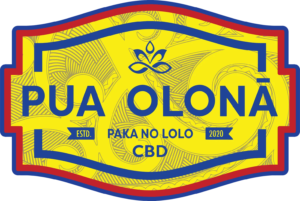N REMIGIO • MARCH 22, 2024
CASHING IN ON PAIN: PROFIT OVER PATIENTS
SHARE POST
THE U.S. CONSUMES 80% OF ALL THE PAIN MEDICATIONS.

Did you know that pursuing legal action against a pharmaceutical company for damages due to drug use requires demonstrating three critical points? Firstly, establishing the injury sustained. Secondly, proving the drug’s defectiveness due to design flaws, manufacturing errors, or inadequate warnings. And finally, linking the injury directly to the medication’s defective nature.
Despite the glaring dangers associated with opioids and other painkillers, the United States has seen little substantial legislative action to address the opioid crisis and broader issues surrounding pain management. Why? Because pain is big business. Consider these staggering statistics:
Prevalence of Chronic Pain
Approximately 40% of adult Americans, totaling around 100 million people, suffer from chronic pain, with one-fifth enduring it for over twenty years—surpassing the combined prevalence of cancer, heart disease, and diabetes.
Disproportionate Opioid Consumption
While the U.S. constitutes only 4% of the global population, it consumes a whopping 80% of the world’s opioids, contributing to two million Americans grappling with opioid addiction and an additional ten million users.
Limited Efficacy
Pain medications, while widely prescribed, provide relief to only a fraction of patients, leaving the majority without substantial benefit.
Economic Toll
Chronic pain and opioid use exact a heavy economic toll, surpassing $500 billion annually, encompassing lost earnings, medical expenses, and legal proceedings.
Pharmaceutical Industry’s Role
Pharmaceutical companies have exacerbated the crisis by producing drugs to alleviate the side effects of opioid overuse, perpetuating a cycle of dependence while profiting from the very medications designed to make addiction more tolerable.
Fatalities
Opioid-related deaths, from both legal and illegal sources, claim around forty-five thousand American lives each year, surpassing the number of deaths caused by car crashes.
These statistics underscore the urgent need for comprehensive measures to address chronic pain management and opioid misuse, including improved access to alternative treatments, better regulation of opioid prescriptions, and increased support for individuals struggling with addiction. Several factors contribute to the inertia in legislative action, here are just a few:
Complexity and Influence
Chronic pain management and opioid misuse are complicated problems requiring pragmatic, thoughtful solutions. This can be challenging for policymakers to navigate as they tend to prioritize corporate interest, science-based expertise over real life experience with addiction. It’s no secret that the pharmaceutical industry and other stakeholders exert significant influence on policymakers, impeding efforts to enact stricter regulations on painkillers and promote alternative treatments.
Political Priorities
Shifting political agendas may divert attention away from healthcare and drug policy, delaying efforts to address the opioid crisis.
Lack of Consensus
Disagreement among influenced policymakers, about the most effective strategies for addressing the crisis have stalled legislative progress.
Resource Constraints
Legislators may face limitations in funding and expertise, hindering the development and implementation of comprehensive solutions.
Despite these challenges, efforts at the congressional level have been made to address the opioid crisis and improve pain management practices. However, more comprehensive and sustained action is needed to effectively address the root causes of the crisis and mitigate its devastating effects on individuals, families, and communities.
Opinion from a Former NSAID Pill Popper
The core issue behind the opioid crisis lies in the relentless pursuit of profit by big pharmaceutical companies. Their drive to create synthetic medications from natural compounds for financial gain appears deeply unethical, particularly when natural alternatives could provide superior efficacy without adverse effects. Embracing natural alternatives offers promising avenues for pain management without the risks associated with synthetic medications. This holistic approach prioritizes overall well-being and long-term health.
If you want to learn more about activating your immune system every day, read HOW CBD REALLY WORKS.
